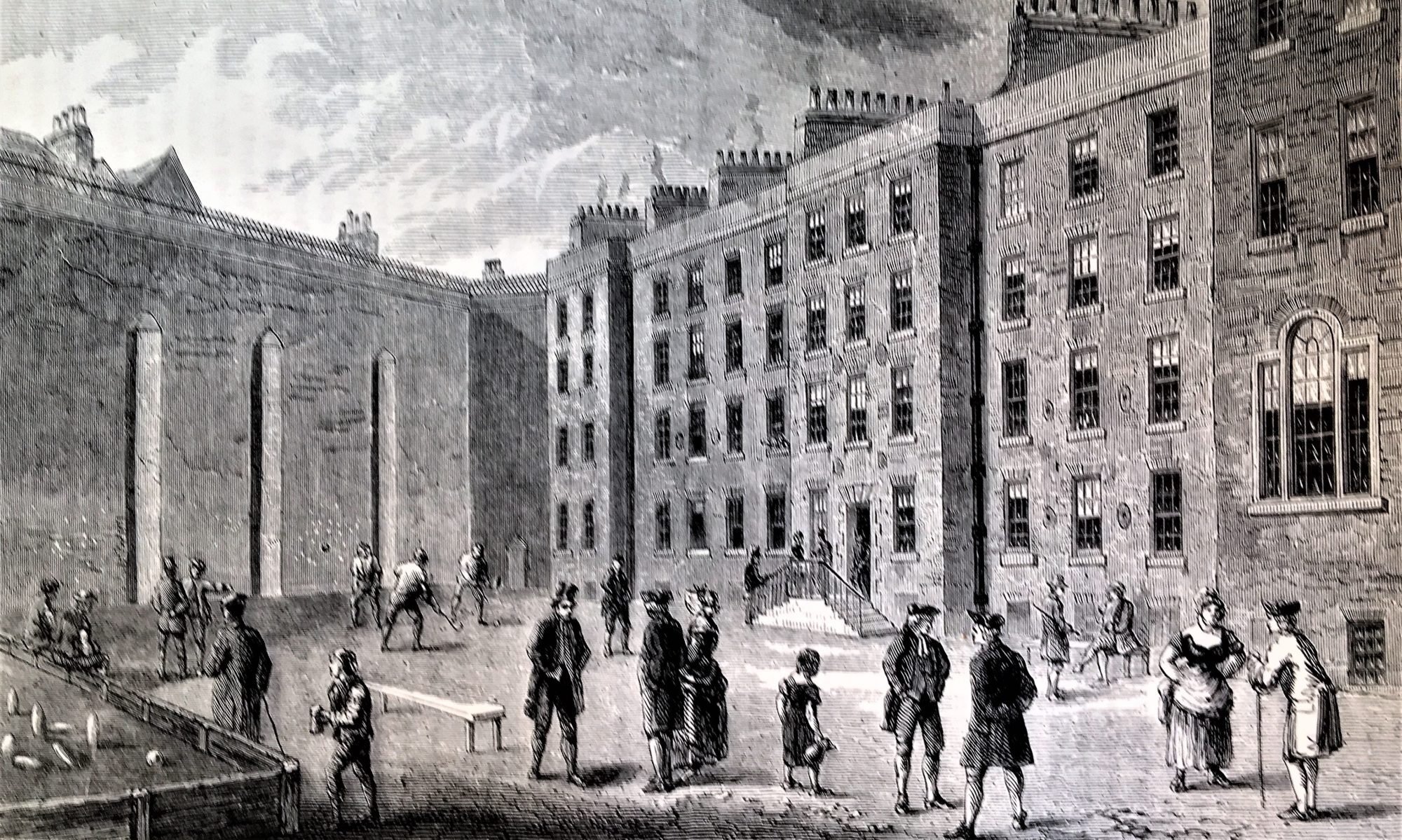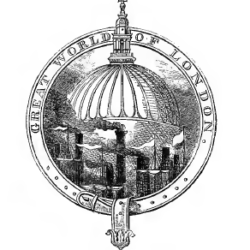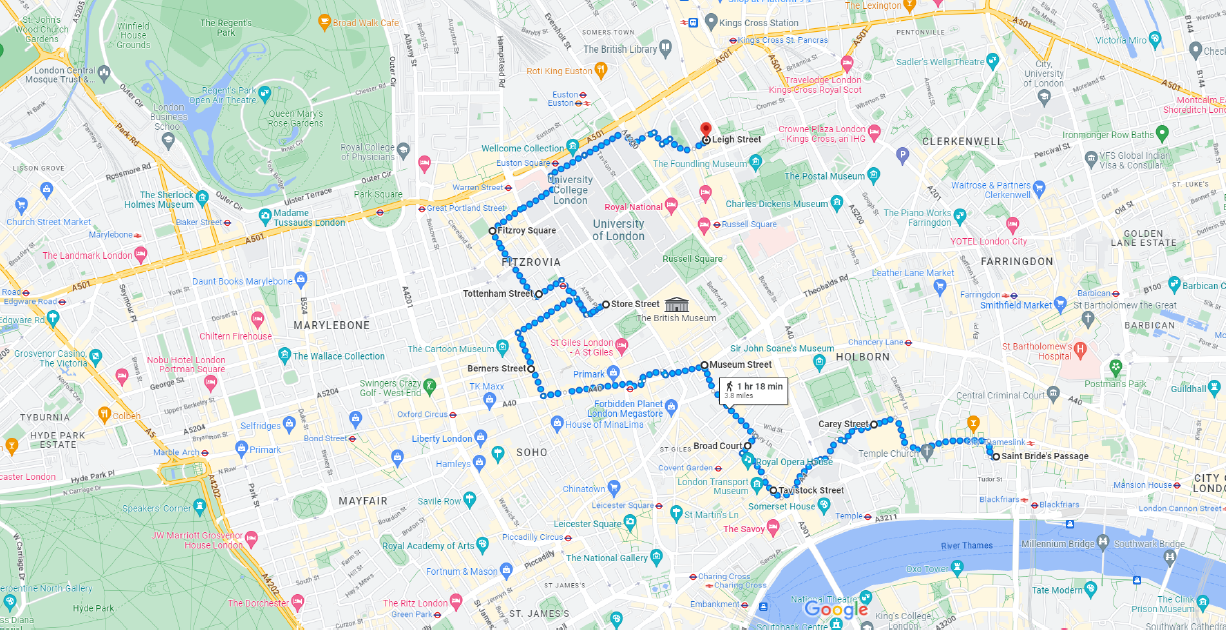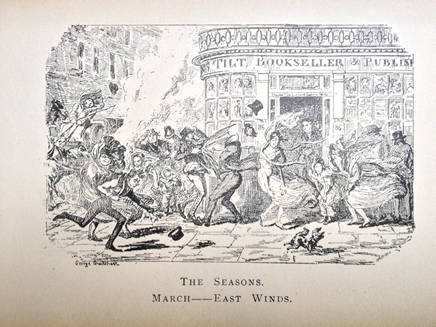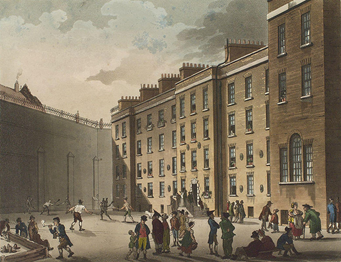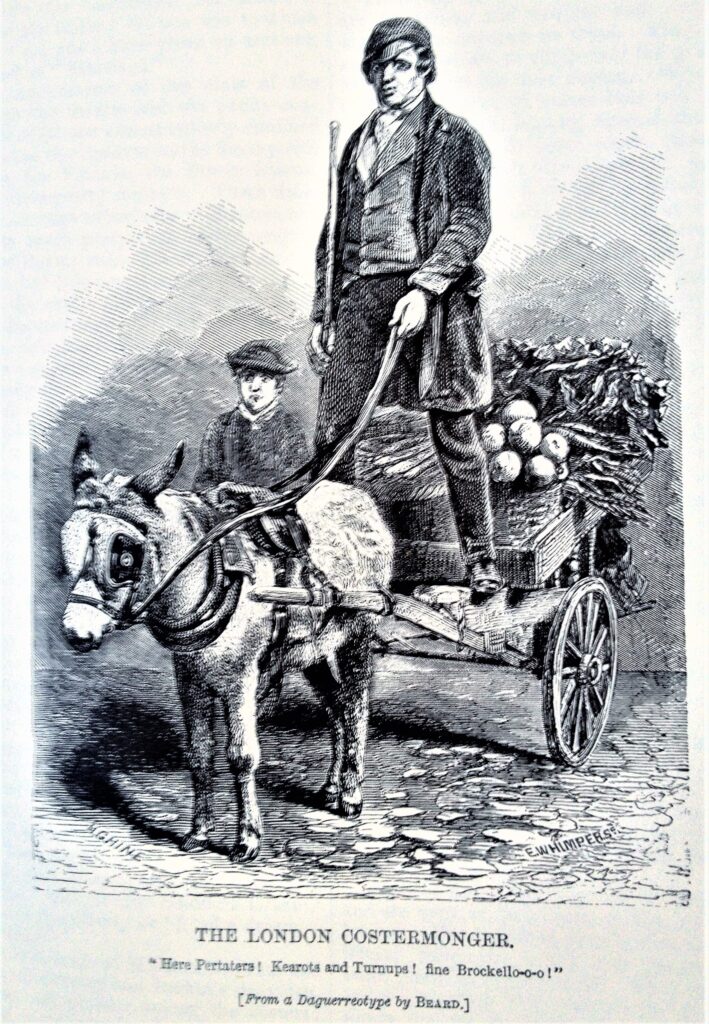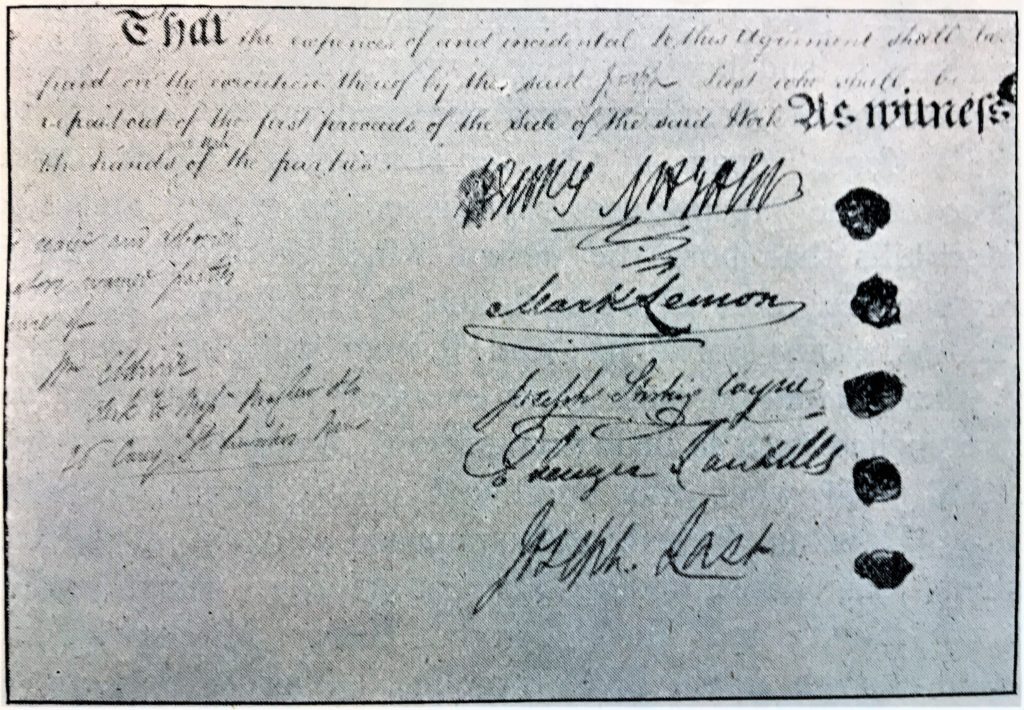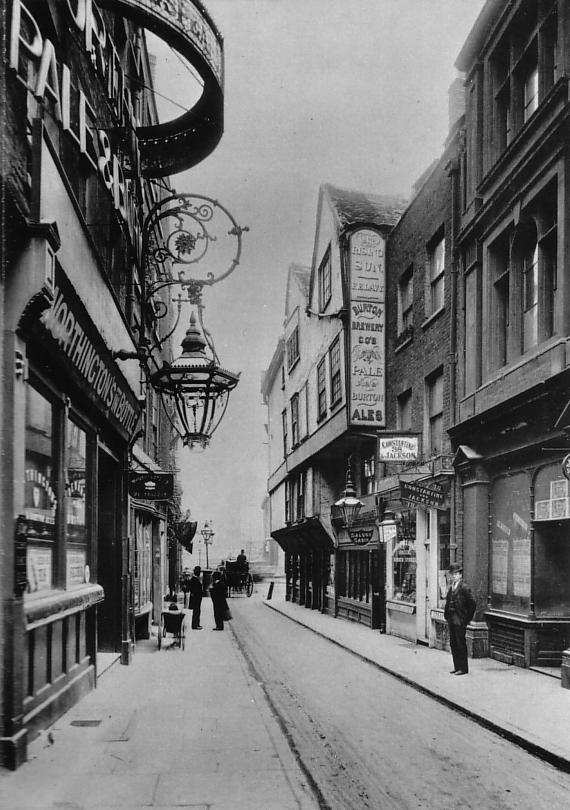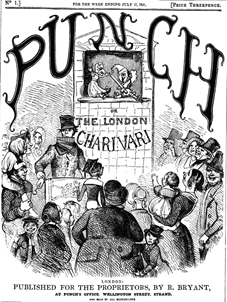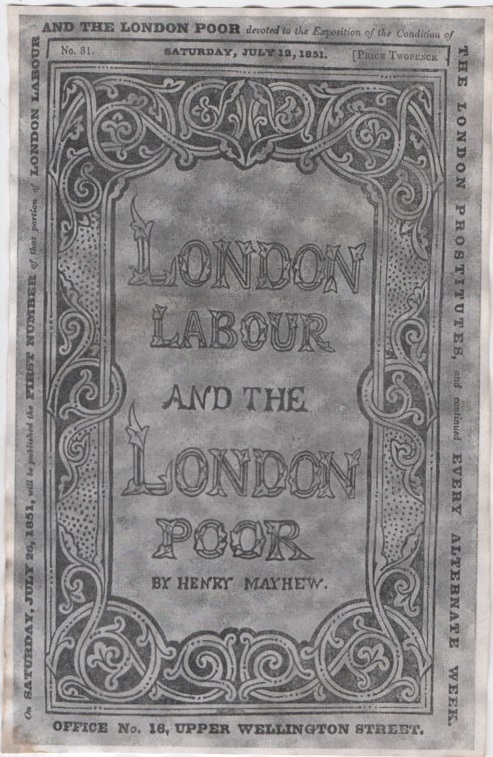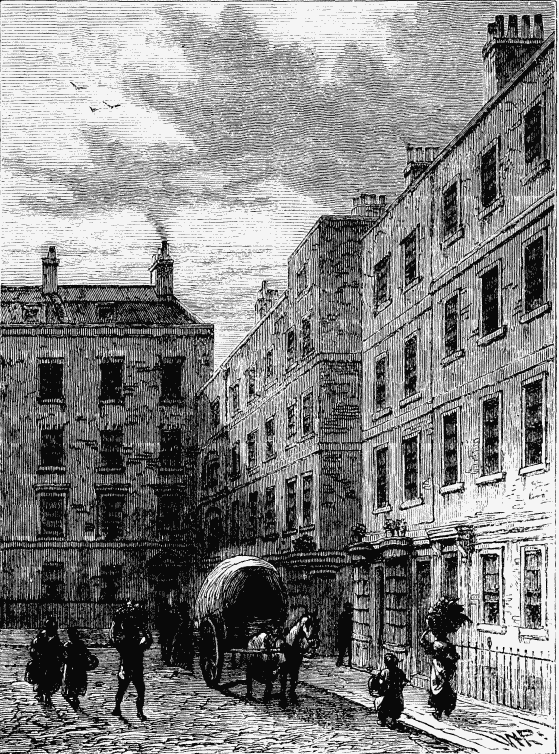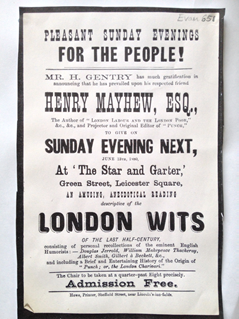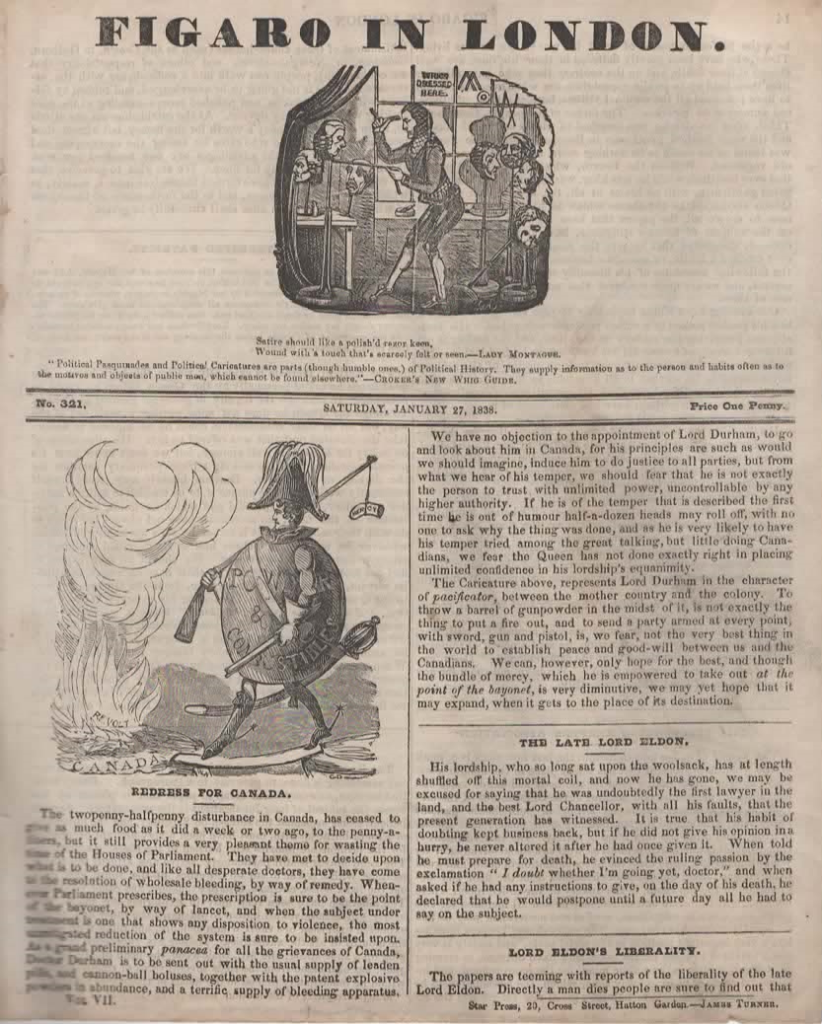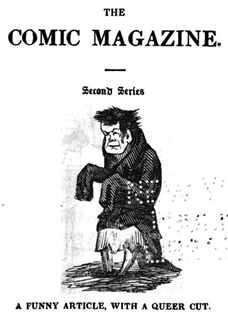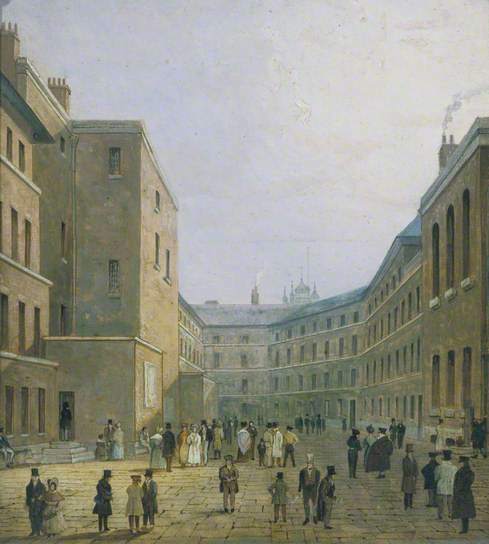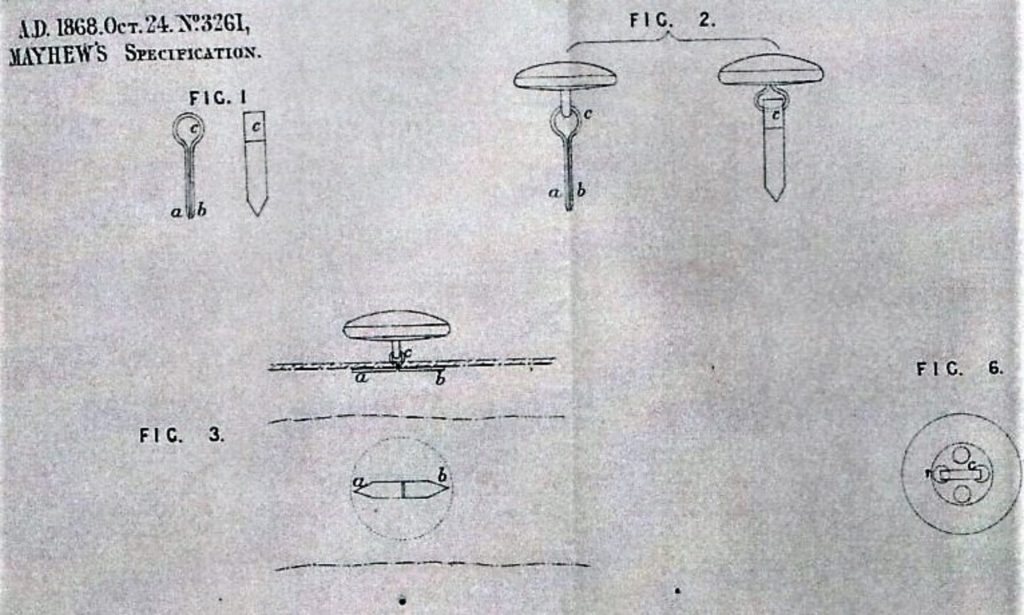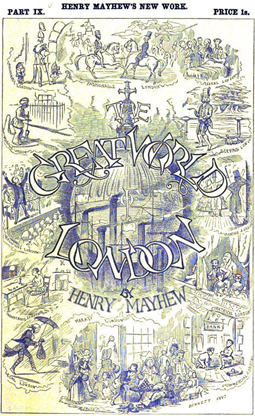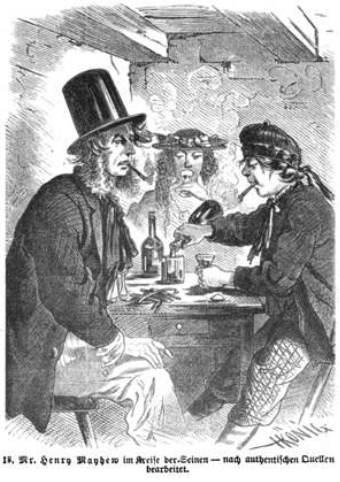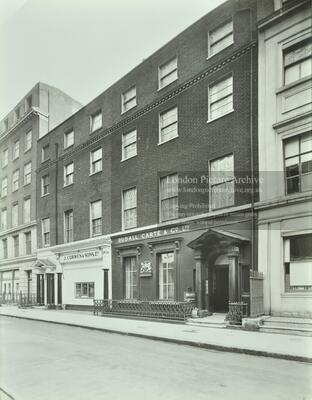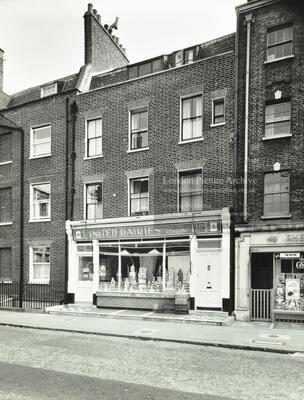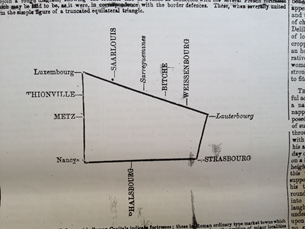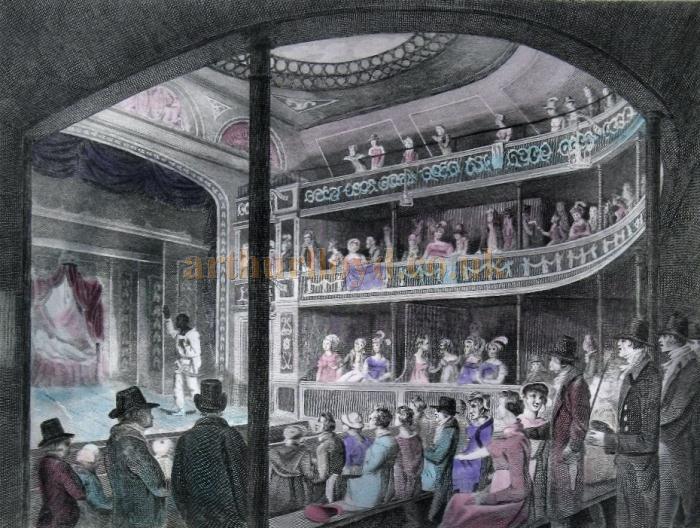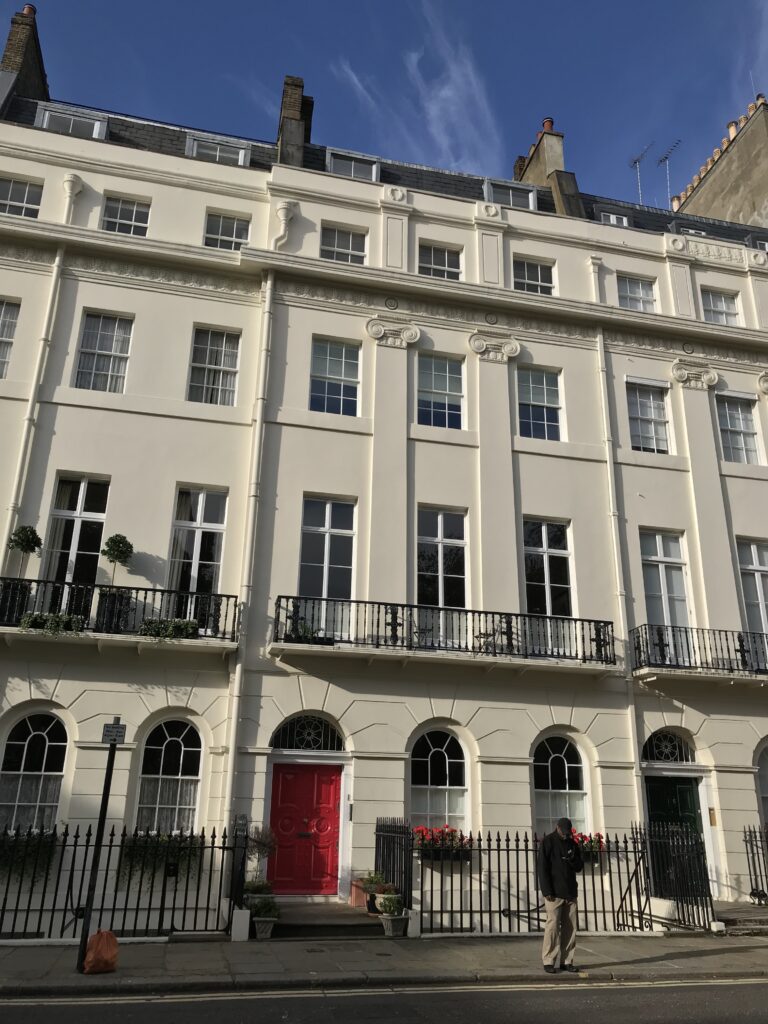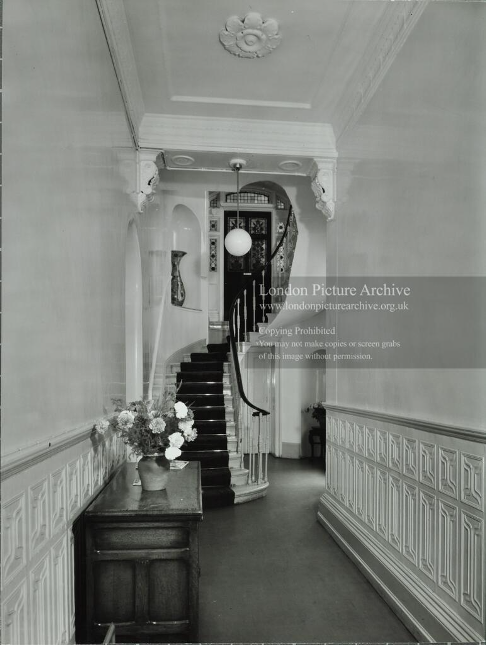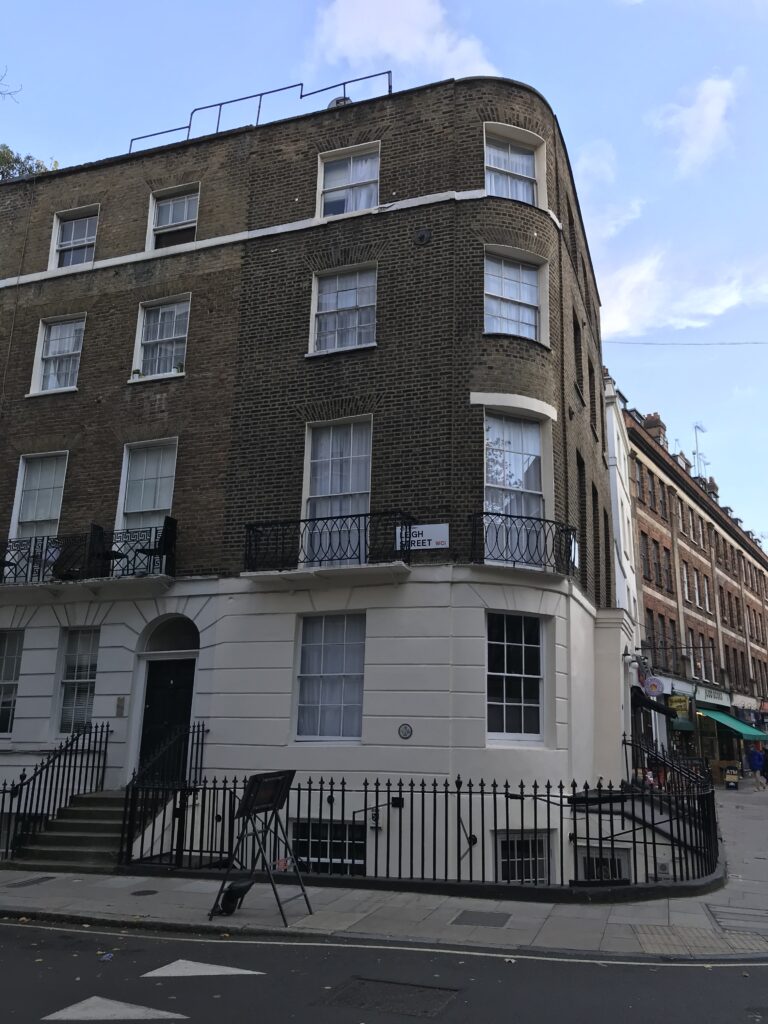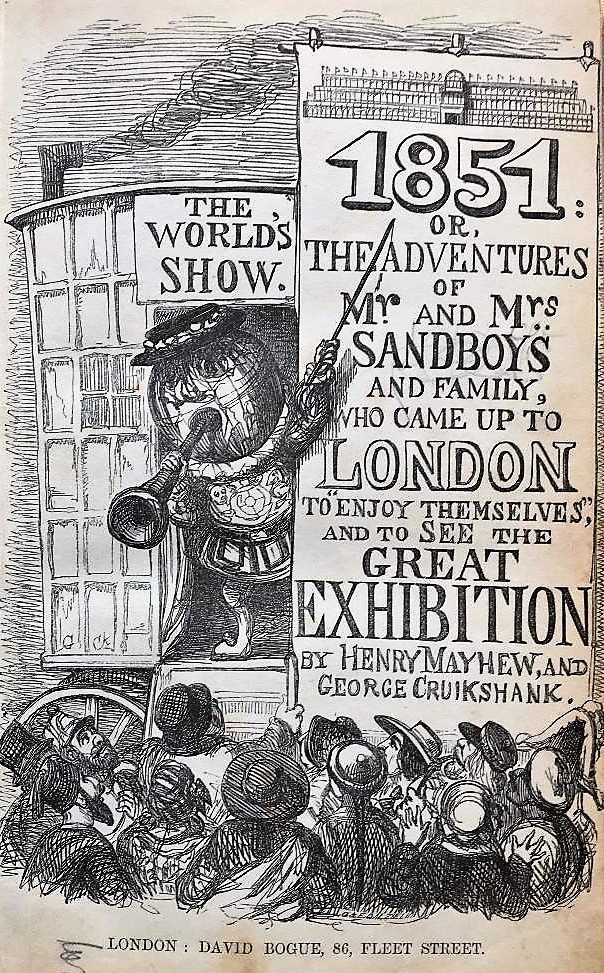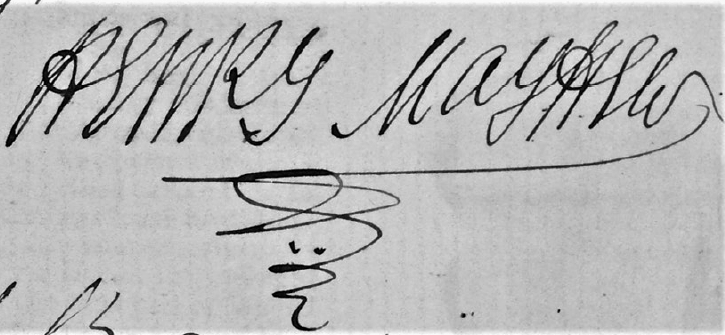Many places in London have associations with Henry Mayhew. The list here sets out a walk through some of the key ones. Non-stop, this walk takes just over an hour (according to Google). But with stops, and lunch midway in Russell Square, it takes more like six.
Stop 1 | St Bride’s Avenue
- David Bogue was Mayhew’s great supporter and publisher. His premises were at 86 Fleet Street, wrapping around the corner into St Bride’s Avenue. Bogue began work there in the 1830’s when Charles Tilt ran the firm. Tilt soon retired, handing the business onto Bogue, along with his authors and illustrators, including the renowned George Cruickshank.
- At the east end of Fleet Street, to the north of Ludgate Circus, sat the Fleet Prison, London’s main debtor prison since the 12th century. Mayhew was incarcerated here from November to December 1833, along with his elder brother Thomas. In 1841, during the early, risky days of Punch, he bribed his way back in to work with another inmate, Henry Grattan, to produce the first Punch Comic Almanack, a Christmas special which saved the fledgling magazine from going under.
Stop 2 | Fleet Street
- London Labour and the London Poor began life at No.69 Fleet Street in December 1850. It was a continuation of the work Mayhew had done for the Morning Chronicle, as their Metropolitan Correspondent, until he was fired (or resigned by his own account) in 1850.
- Whitefriars, running south from Fleet Street, became the main office for Punch after the Bradbury and Evans takeover in 1842. They had their state-of-the-art printing works there. Mayhew stayed on with Punch as Suggestor-in-Chief until he was fired in 1846.
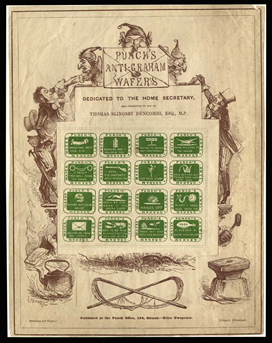
Stop 3 | Carey Street
- Mayhew’s father, Joshua, was a solicitor, who specialised in the bankruptcy courts. His law firm was located at No. 26 Carey Street. Mayhew was brought to work here after his return from India in 1828, a brief spell that ended disastrously.
- In 1841, the founding deeds for Punch were drawn up there by Mayhew’s brother, Augustus (the only one of the Mayhew boys to follow in their father’s footsteps). Henry’s signature was the first among the five founders of the periodical that came to define Victorian culture.
Stop 4 | St Clements Church, Strand
- Wych Street and Holywell Street, medieval survivors of the Great Fire of London, radiated out from St Clements until the Edwardian Aldwych development erased them. Up Wych Street, in 1840, the idea for Punch emerged from boozy hours at The Shakespeares Head. The landlord was Mayhew’s friend and collaborator, Mark Lemon, who grew famous as the editor of Punch until 1870.
- Clements Inn sat north east of St Clements. Only the stone entrance arch now remains. Mayhew had a room here when he organised contributors, such as Thackery, to join the Punch startup.
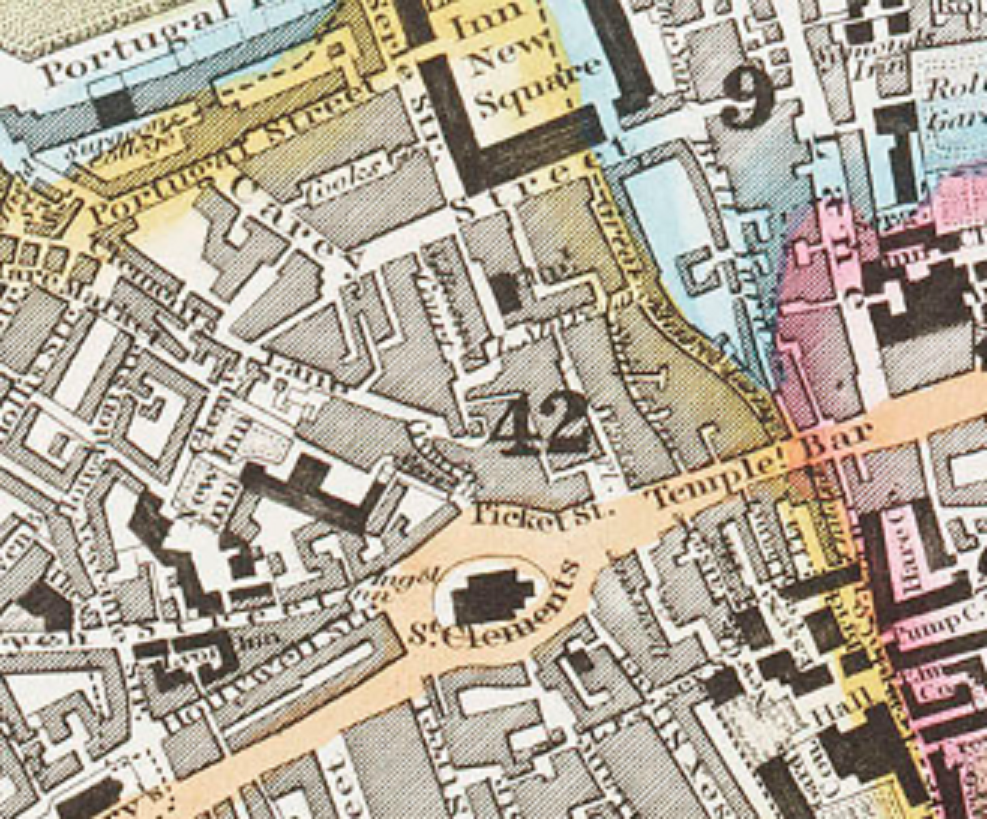
Stop 5 | Wellington Street
- Wellington Street was the heart of Victorian periodical publishing. Dicken’s Household Worlds magazine was based here, as was G.W.Reynold’s more radical Reynolds Newspaper. In 1841, Punch’s first office was at No.3 Wellington Street.
- Mayhew returned here in 1851 when London Labour and the London Poor moved to offices at No.16 Upper Wellington Street.
Stop 6 | Tavistock Street
- Mayhew spent the last 30 years of his life moving from one rented room to another. His last was at No.8 Tavistock Street. Aged 74, he died here on 25th July 1887. He was buried at Kensal Green Cemetary.
- Mayhew’s last known public appearance had been seven years earlier at The Star & Garter, Leicester Square, to share his reminiscences about his early days with the crowd that formed Punch.
Stop 7 | Broad Court
- The Wrekin pub stood at 22 Broad Court and was where Mayhew and his bohemian coterie hung out in the 1830s. A portrait of them featured in The Town, a scurrilous journal for the London demi-monde.
- During the 1830s, Mayhew and his old Westminster school friend, Gilbert a’Beckett, published and wrote Figaro in London, a very successful satirical magazine and the forerunner of Punch, alongside many other more ephemeral productions like The Comic Magazine. Mayhew wrote under the pen name of Ralph Rigmarole, a ploy to evade police and debt collectors alike.
Stop 8 | Museum Street
- Mayhew lodged at 40a Museum Street in the late 1860s. In 1868 he spent time in the last remaining debtors prison in Whitecross Street. He applied to the Royal Literary Fund for relief, giving 40a Museum Street as his address. They gave him £50.
- In 1868, Mayhew also applied for a patent for a new invention – ‘An improved Button Fastening’ – designed to do away with needles and thread. Patent Number 3261 was approved by the Patents Office on 20 April 1869. One newspaper reported it under the headline ‘Single Men, May-Hew Evermore Be Happy!’
Stop 9 | Percy Street
- Mayhew and his family lived at No.15 in 1856, on their return from a couple of years in the Rhineland. Supported by his publisher Bogue, Mayhew planned to revive London Labour and the London Poor. He also worked on Bogue’s weekly paper The Illustrated Times, covering insurance frauds and the infamous Rugeley Poisoner trial at the Old Bailey.
- In March 1856, Mayhew and Bogue launched a new series, The Great World of London. The plan was for Mayhew to cover the whole spectrum of life in London. He began with the criminal prisons, visiting each in turn, and developed a reputation as a pioneering criminologist. Bogue’s sudden death in November 1856 put an end to the series and all their other plans.
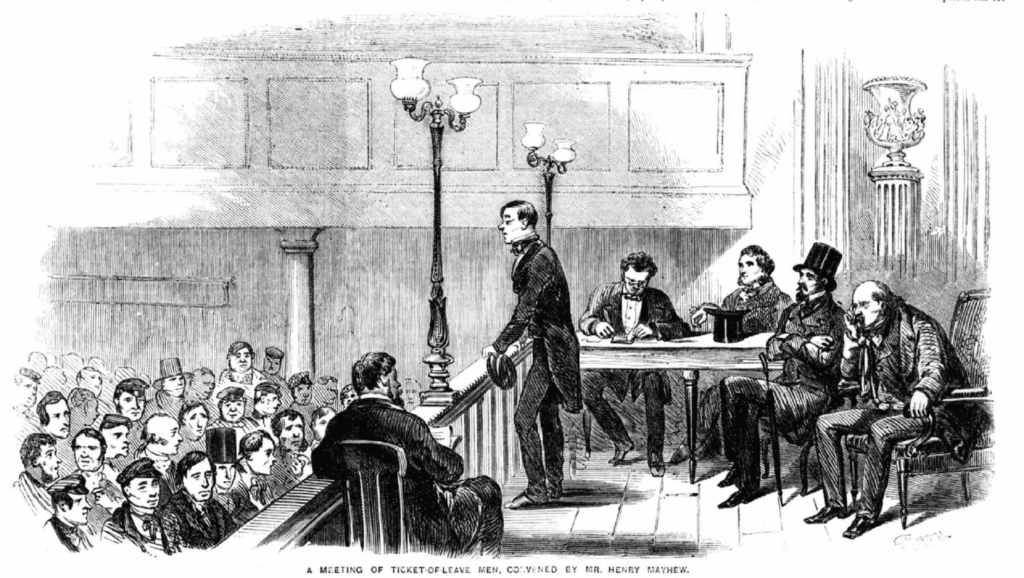
Stop 10 | Berners Street
- Mayhew lived at No.22 Berners Street in 1863, after a return from a couple of years living in Saxony. He and his wife, Jane, separated soon after. Mayhew wrote a personal, sometimes hilarious, sometimes bitter, account of his time in Saxony in two volumes of diatribe called German Life and Manners. For the first time, in the Preface, he acknowledged Jane as the “sleeping partner” in the Mayhew brand, collaborating and contributing to his works over the years. His unflattering account of German life provoked Leipzig’s Illustrate Zeitung to print a riposte, dedicated to Mayhew, complete with a double-page spread of cartoons mocking English ways, including one of the Mayhew family, drowning sorrows in a Saxon bar.
- In 1863 Mayhew launched his final London periodical, Shops and Companies of London, exploring the commercial life of the city. The work sank in debts after a few issues. Mayhew left London to cover the Schleswig-Holstein war between Denmark and Prussia for the Daily Telegraph, his first stint as a war correspondent.
Stop 11 | Store Street
- By 1881, Mayhew was a lodger at 37 Store Street. His landlord, John Clutterbuck, was a decorator living with his wife, daughter (a dressmaker), a servant girl, and five other lodgers. Then, Store Street was a row of Georgian terraces, of which only one survived into the twentieth century.
- In the years prior to moving here, Mayhew’s activities are hard to trace. Most notably, with his son Athol, he covered the 1870 Franco-Prussian war for the London evening paper The Globe and Traveller. The pair came close to being shot as German spies and were expelled from France before the war’s end.
Stop 12 | Tottenham Street
- Location of the Fitzroy Theatre, opened by Mayhew and Gilbert a’Beckett in 1834. They wrote and staged burlesque plays, including a musical, The Revolt of the Workhouse, which drew the censor’s eye. Mayhew’s main contribution was The Wandering Minstrel, which became a Victorian music hall favourite until the end of the century. Sadly, Mayhew sold the rights to it for £25, as the Fitzroy Theatre descended in disputes, court cases and debts. A’Beckett’s closing appearance was in the bankruptcy courts, while Mayhew disappeared to Paris to avoid the bailiffs.
Stop 13 | Fitzroy Square
- Mayhew was born in Great Marlborough Street (opposite where Liberty’s now stands). In 1827 his family moved to the more prestigious No.16 Fitzroy Square. That year Mayhew was expelled (or ran away according to his account) from Westminster school. In June, against his wishes, his father enlisted him as a trainee midshipman on an East India Company ship bound for Calcutta. On their return to London in 1828, Mayhew left the ship, returning home with just the shirt on his back and a tarantula in a jar.
- After his return from India, his father took the 16 year-old Mayhew under his wing at his law firm in Carey Street. Mayhew was bored there. One day, sent to lodge some urgent papers with the court, he instead wandered the streets, taking in the life there. That evening, court bailiffs turned up during dinner to arrest his father. Mayhew crept out the house, and stayed away for years.
Stop 14 | Leigh Street
- In 1851, Mayhew lived at 1 Leigh Street while he worked on London Labour and the London Poor. His habit was to take the street people to Leigh Street for interviews, with his younger brother Augustus or another helper acting as stenographer. Critics said he plied them with drinks too, but that was a minority view.
- With finances difficult (as ever) Mayhew worked on parallel publications throughout 1851. One, Low Wages, was an academic analysis of the causes of poverty. He argued poverty was endemic to unfettered capitalism, cementing his growing following among working class radicals and Tory protectionists alike. Another, more lighthearted, was 1851: or The Adventures of Mr and Mrs Sandboys and Family who came upto London to enjoy themselves and to see the Great Exhibition, a comic skit on the crowds flocking to London for the ‘Crystal Palace’ exhibition opening in Hyde Park. With his old friend George Cruickshank sharing the billing as illustrator, the monthly serial was said to be the fastest selling since Dickens’s Pickwick Papers.
